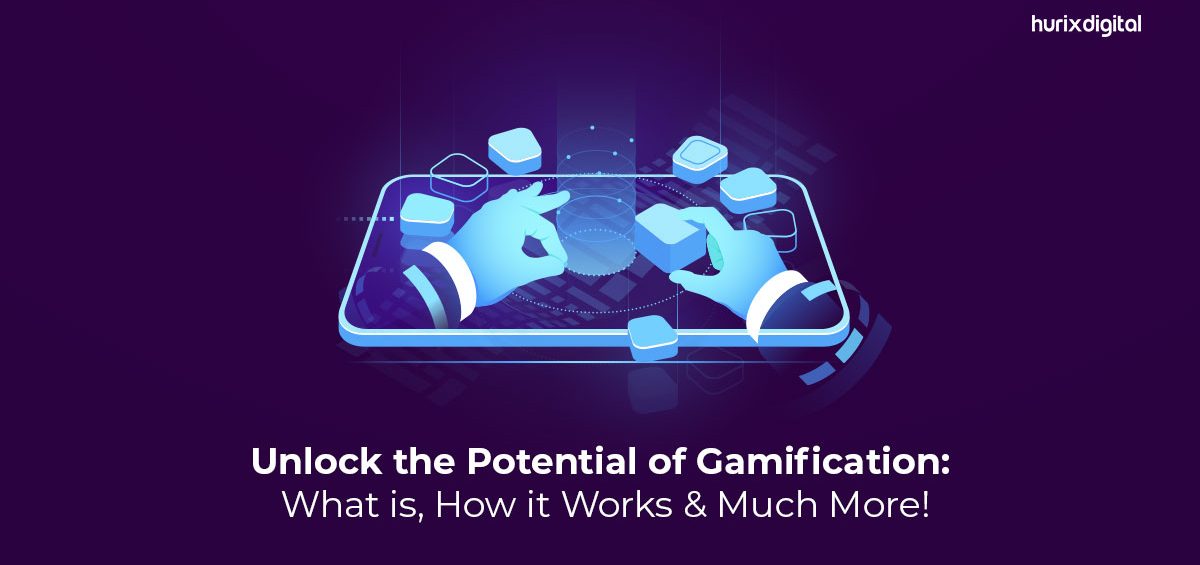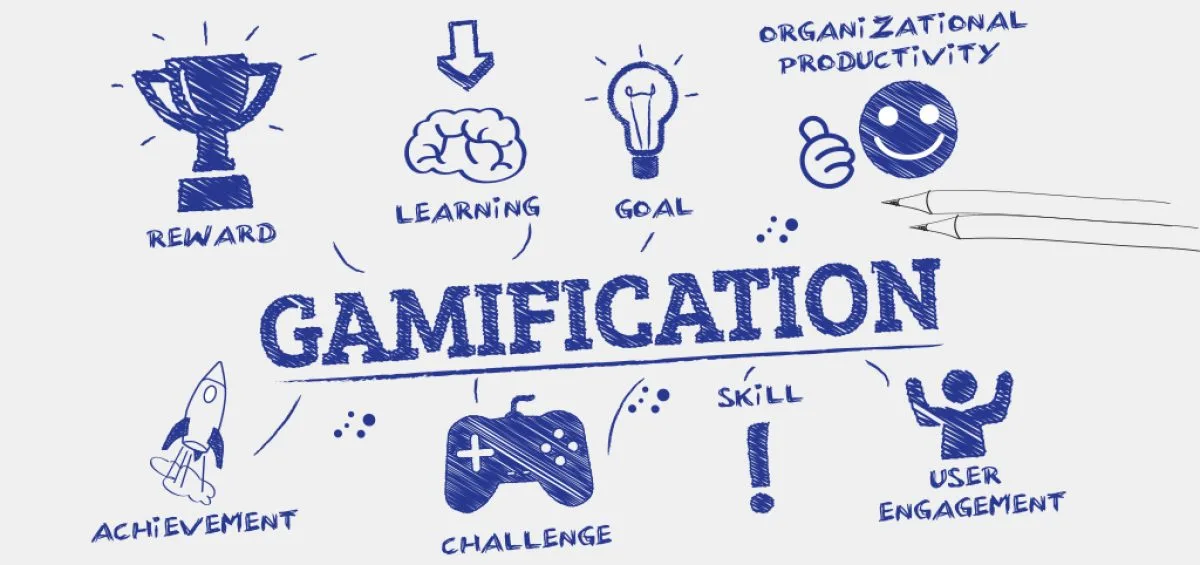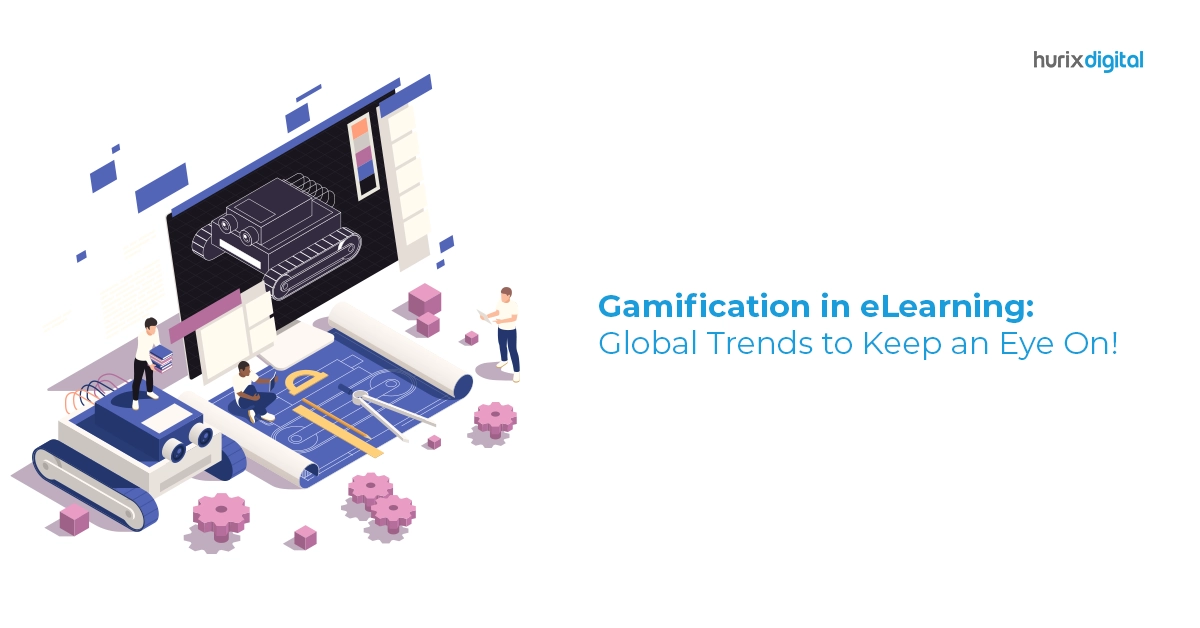Gone are the days of mundane textbooks and tedious lectures. Instead, imagine a dynamic learning environment that immerses you in interactive challenges, rewards your progress, and ignites your passion for learning. Gamification in e-learning is not just about playing games—it’s a powerful tool that enhances engagement, motivation, and retention.
Today we’re about to unlock the power of gamification in e-learning and discover how it can revolutionize how we acquire knowledge. So get ready to embark on a thrilling adventure where education and entertainment intertwine to create an unforgettable learning experience.
Table of Contents:
- A Brief Introduction to Gamification
- How Does Gamification Work?
- What are the Benefits of Gamification in the E-Learning Industry?
- Final Thoughts
A Brief Introduction to Gamification
With the rising recognition of game-based learning, many multinational corporations are embracing the incorporation of gamification elements in their work environments.
Presently, reports indicate that up to 70% of the Global 2000 companies have embraced gamification as a valuable tool in their operations. This significant adoption demonstrates the widespread acknowledgment of gamification’s positive impact on organizational success and performance.
So, what exactly are these gamification elements, and why is it creating a buzz in various industries?
Gamification is all about applying elements from games to non-game contexts to boost engagement, motivation, and participation. It’s like sprinkling a little dash of gaming magic onto your everyday experiences.
Imagine this: You walk into a store, and instead of a bland, mundane shopping trip, you’re greeted with a thrilling adventure. Every purchase you make earns points, badges, or even virtual currency that can be redeemed for discounts or special rewards. Sounds exciting, doesn’t it?
That’s gamification in action. It harnesses our innate desire for competition, achievement, and rewards, transforming ordinary tasks into captivating experiences. By incorporating game-like elements such as challenges, leaderboards, progress tracking, and rewards, gamification captivates our attention, fuels our motivation, and keeps us coming back for more.
But hold on a second! Gamification isn’t just limited to customers and consumers.
It can also work wonders within your small business. Imagine your employees being motivated by a gamified system that tracks their progress, rewards their achievements, and encourages friendly competition among team members. Mundane tasks become exciting quests, and productivity soars to new heights.
How Does Gamification Work?
At its core, gamification revolves around important elements that make games addictive and captivating. These elements include challenges, goals, rules, feedback, rewards, and a sense of progression.
Top brands like Nike are leveraging the power of gamification to create products like NikeFuel with added gamification features that pit athletes against each other. But how do they achieve this using gamification? Let’s take an example to understand it better.
Picture yourself playing a video game. In that game, you have specific objectives to achieve, whether it is reaching a higher level or completing a challenging quest. All these objectives serve as the primary goals of the game and give you a sense of purpose and direction.
Similarly, in gamification, setting clear goals is crucial to guide participants and provide them with a sense of accomplishment.
But what’s a game without some obstacles and challenges to overcome? Gamification incorporates challenges to keep participants actively involved. These challenges can be anything from solving puzzles, answering quizzes, completing tasks, or even achieving certain milestones. By presenting these hurdles, gamification taps into our natural inclination to overcome obstacles and succeed.
Now, what makes games addictive is the feedback loop they create. You defeat an enemy, and you hear that satisfying “ding” sound. You solve a puzzle, and the game rewards you with a cheer or a virtual trophy. This immediate feedback reinforces your progress and encourages you to keep going.
But let’s not forget about the rewards, shall we? In games, rewards can come in various forms, like unlocking new levels or earning virtual currency.
Similarly, gamification techniques utilize rewards to recognize participants’ achievements and incentivize desired behaviors. These rewards can be tangible, such as discounts, freebies, or exclusive access, or intangible, like badges, points, or virtual rankings.
What are the Benefits of Gamification in the E-Learning Industry?
Now, here’s the beauty of gamification: it can be applied to various contexts. From education and training to marketing and employee engagement, gamification has the power to transform any experience into an exciting and rewarding adventure.
The market for game-based learning is projected to experience significant growth, with an anticipated increase from $3.5 billion in 2018 to a staggering $24 billion by 2024. Similarly, the global gamification market, with education being a prominent consumer, is forecasted to exhibit remarkable growth. Starting at $9.1 billion in 2020, this market is expected to reach an impressive $30.7 billion by 2025.
In case you are still not convinced with the potential of gamification in the e-learning industry, here are its top 5 gamification benefits that you can’t miss:
- It Enhances Learner Engagement: Gamification adds an element of fun and interactivity to e-learning, captivating learners’ attention and motivating them to participate in the learning process actively.
- Gamification Increases Knowledge Retention: By incorporating game-like challenges, quizzes, and rewards, gamification reinforces learning outcomes and helps learners retain information more effectively.
- Offers Personalized Learning Experience: Gamification allows for adaptive learning paths based on individual progress and performance, catering to learners’ unique needs and providing a personalized educational journey.
- Motivated Learning Environment: Using leaderboards, badges, and progress tracking fosters healthy competition among learners, creating a motivating environment that encourages continuous improvement.
- Provides Immediate Feedback and Assessment: Gamification provides instant feedback on learners’ performance, allowing them to identify areas for improvement and enabling educators to assess progress efficiently.
Final Thoughts
The potential of gamification in e-learning is truly transformative. By harnessing the power of game elements, educators and instructional designers can create engaging and immersive learning experiences that captivate learners and drive motivation.
Gamification not only enhances learner participation and knowledge retention but also fosters a sense of enjoyment and achievement. As technology continues to advance, incorporating gamification into e-learning will undoubtedly play a pivotal role in revolutionizing education. So, embrace the power of gamification and unlock a world of endless possibilities for enriching and effective e-learning experiences.
Hurix is a leading provider of gamified learning solutions that revolutionize how organizations approach training and development. With our gamification expertise, we transform traditional learning experiences into engaging, immersive journeys that enhance learner motivation and knowledge retention.
Contact us today to know more!
Also Read – Gamification in Training: A Guide to Enhancing Corporate Learning











